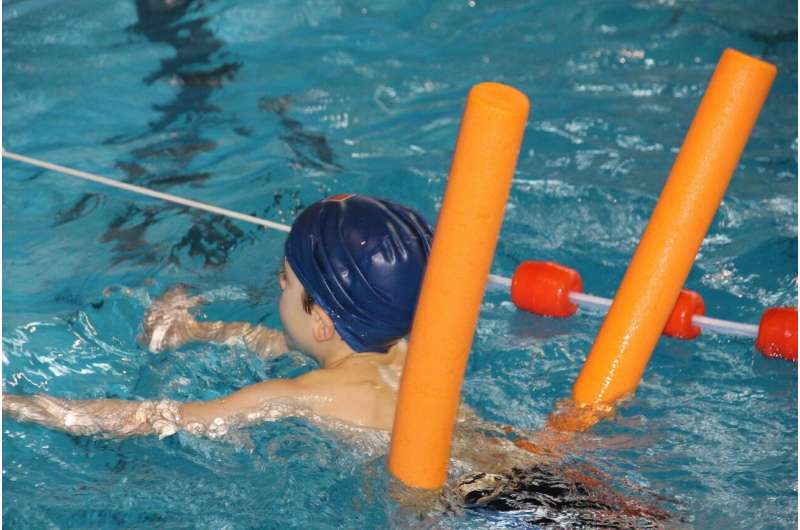Adaptive swim classes build confidence, safety skills for autistic children

Based on the positive results of a new pilot study offering personalized aquatic occupational therapy for 19 autistic children, researchers at The Ohio State University Wexner Medical Center and College of Medicine will expand the program to include 36 autistic children over the next year.
Initial results show that the lessons not only improve swim skills and make the water safer, but they also build physical, behavioral and social competency that goes beyond the swimming pool, said Erika Kemp, clinical assistant professor of occupational therapy at Ohio State's School of Health and Rehabilitation Sciences.
"Every kid is a little bit different, and a lot of the big challenges of teaching children with autism have to do with being able to learn in the same way that their peers learn," Kemp said. "When you think about typical swim lessons, often there is one teacher giving the same instruction to the whole group. That's where we get into some difficulty with kids with autism. Often, they need the instruction presented in a different way or in a one-on-one environment."
Based on the success of the pilot study, Kemp received the American Occupational Therapy Foundation Intervention grant to continue this study. The timing couldn't be better with warmer weather signaling the start of swim season for many families.
But for those with a child on the autism spectrum, swimming can be an intimidating and dangerous proposition. In fact, drowning is the No. 1 cause of accidental death among those on the autism spectrum, meaning parents and caregivers need to be purposeful in teaching them water safety.
To give those learners the attention and specialized instruction they need, Kemp and her team hold individualized, one-on-one swimming lessons for autistic children ages 3–12 at a pool located inside West Central School, a Franklin County Board of Developmental Disabilities program for teen and young-adult students in Columbus, Ohio.
During each session, occupational therapists tracked the children's swim skills. In addition, qualitative interviews and a follow-up survey were conducted with parents to determine impact on families and individual participants. Children who participated in one 10-week session can participate in additional 10-week sessions until they plateau in progress of swim skills, Kemp said.
"Every kid that we've put through the program has made gains in things like water adjustment, comfort in the water and their ability to go under the water and hold their breath," Kemp said. "Then, we work on being able to maintain their balance in the water, maintaining a float and getting themselves to move through the water."
With the success of the pilot program, Ohio State is expanding Kemp's research and the adaptive swim program, with the goal of implementing similar programs to help the millions of autistic children safely experience the joys of swimming.
"We set individual goals for everyone," Kemp said. "One child that we've been working with wouldn't even come into the pool at first, and now she willingly gets in, can move through the water and is starting now to lift her feet up off the floor, which is a really big skill gain for her."





















